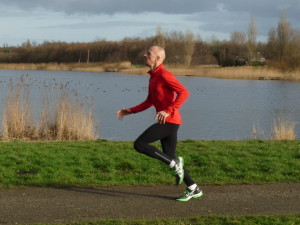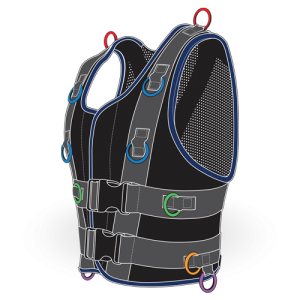Training is a normal part of my life: I’ve been training regularly for more than 35 years and most of that period on an almost daily basis. So I’m quite fit and my basic physical condition is pretty good (considering my age) and my heart can still make 200 beats/min… I keep a record of most of my physical activities at my page on the Suunto website “movescount.com”.
Often I’m asked the question what one needs to do to climb Mt Everest. It’s a difficult question, and I honestly do not have a clear answer… However, I’m convinced that there are two essentials: an excellent aerobic condition and sufficient climbing skills and for both a minimal level of physical strength is indispensable. Hence my basic training consists of a combination of aerobic training and strength training. Most of my training I do at the Health Promotion Centre (HPC) of Shell’s Global Head Quarters in The Hague, where I train every working day if I’m in The Netherlands. In addition, I do aerobic training on Mondays at Argos Sport, where I’ve been training for 30+ years and where I’ve been teaching for many years as well. In the weekends I try to run two times 10 km, during summer I try to swim across the little lake I live on every day (~ 1 km swim) and I try to use the bicycle to go to work regularly (~52 km bike ride).
working day if I’m in The Netherlands. In addition, I do aerobic training on Mondays at Argos Sport, where I’ve been training for 30+ years and where I’ve been teaching for many years as well. In the weekends I try to run two times 10 km, during summer I try to swim across the little lake I live on every day (~ 1 km swim) and I try to use the bicycle to go to work regularly (~52 km bike ride).
Nevertheless, I’ve added two specific types of training to prepare for this expedition.
The first type is “Hammer Strength” a type of training aiming at increased core stability. I did Hammer strength for the Everest expedition in 2012 as well, and it seemed quite effective, especially when crossing the ladders over the many crevasses in the Khumbu Icefall and glacier.  During the Hammer Strength training you wear a specific vest which has several rings attached to it at specific places, to these rings weights are attached with pulleys. The idea is that you do specific exercises and that while doing these exercises the weights try to pull you out of your equilibrium. To maintain your equilibrium, you use your rump muscles and train the stability of your core.
During the Hammer Strength training you wear a specific vest which has several rings attached to it at specific places, to these rings weights are attached with pulleys. The idea is that you do specific exercises and that while doing these exercises the weights try to pull you out of your equilibrium. To maintain your equilibrium, you use your rump muscles and train the stability of your core.
The second type is “Powerbreathe” a type of training aiming to increase the musculature of your ventilation system. Essentially, you simply breathe through a small device that limits the airflow. To get enough air, you have to use your diaphragm and the intercostal muscles which are trained harder if you increase the resistance.
